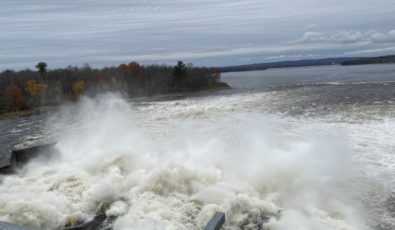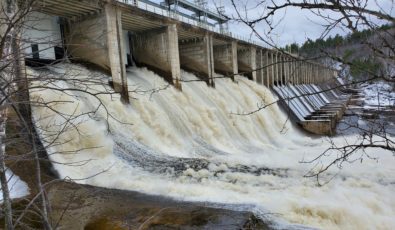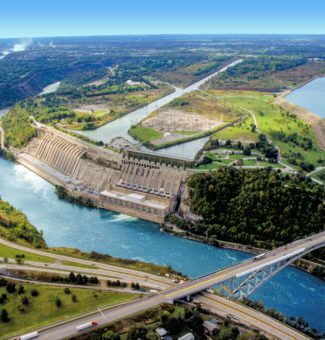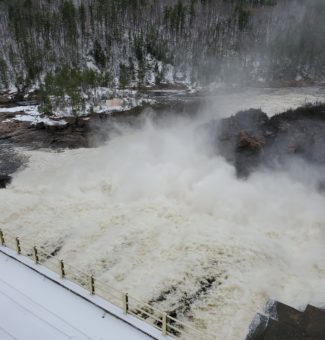OPG’s hydro operations managing the impacts of “fall freshet”
In eastern and northeastern Ontario, OPG’s water management staff have been busy this fall managing the impacts of “fall freshet.”

While most people associate freshet with the spring, a similar phenomenon can occur in the autumn months as well. The annual spring freshet occurs when snow melts and spring rains fall, causing higher water levels in lakes and rivers, but higher flows can also occur in the fall when large amounts of precipitation cannot be easily absorbed into the ground.
“A number of factors contribute to fall freshets but they typically include increased precipitation in the late summer followed by large rain events in the fall,” said Mike Clarke, a Water Manager in OPG’s Northeastern Operations. “During these periods, the days have become shorter and cooler which reduces evaporation, while trees and other vegetation are no longer actively growing and have lost their ability to offset the runoff. With the ground already saturated, and at times partially frozen, this increased water will flow directly into lakes and rivers causing the water levels to rise quickly.”
“A number of factors contribute to fall freshets but they typically include increased precipitation in the late summer followed by large rain events in the fall.”Mike Clarke, a Water Manager in OPG’s Northeastern Operations
This fall, above average rainfall amounts in eastern and northeastern Ontario have led to higher than normal water conditions. OPG’s hydro operations in these regions are applying similar strategies as they would in tackling spring freshet, which includes utilizing reservoirs on OPG’s river systems to help mitigate any flooding impacts.
OPG is just one of many entities in the province acting to mitigate the impacts of freshet. While the company continually prepares its stations and equipment, and operates dams to manage high flows and flooding, the company’s storage capabilities are not infinite and are in most cases exceeded during a high-water season.

“Available storage in these reservoirs is limited and it is important to use our storage at the right time to ensure it has the greatest benefit,” said Clarke. “OPG works very hard to react to changing conditions on the river, help mitigate any effects of this increased water to the extent possible, and then to support the river’s return to a balanced condition both upstream and downstream of our facilities as well.”
And while water levels across some of OPG’s watersheds are higher than normal now, soon reservoirs will be lowered to the bottom of their operating range to make room for the coming spring melt – a process called winter drawdown.
In the coming months, water control structures will be utilized to release water from reservoirs, lowering levels in anticipation of the spring flows. As flows pick up due to the thaw and spring rainfall, the reservoirs can be refilled while stations continue to operate.
Drawdown can take as little as a week, or as much as several months, and is dependant on the size of the reservoir and the historical drawdown strategy for the reservoir.
Contrary to public opinion, lowering these key reservoirs earlier won’t have any benefit of flood mitigation in the spring, Clarke emphasized. In fact, lowering water levels too early could result in very low water levels for an extended period of time over the winter, negatively impacting residential infrastructure and fish habitats.
It’s a constant balancing act.
“With both a spring and fall freshet, it’s important to balance the needs of multiple users with the natural environment in mind,” said Clarke. “Water management plans and related strategies were developed with input from government and First Nations, the public and other stakeholder groups, and represent what is understood to be the most representative approach to managing these watersheds.”
Managing exceptionally high water levels
Subscribe and stay informed
Sign up to receive the latest news, project updates, and event information from OPG.


